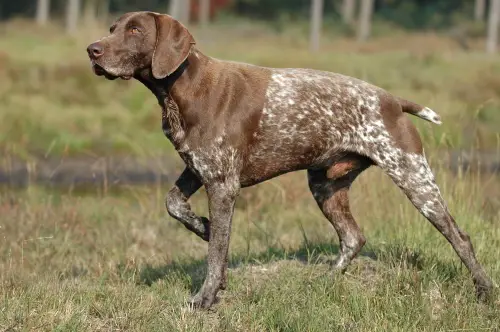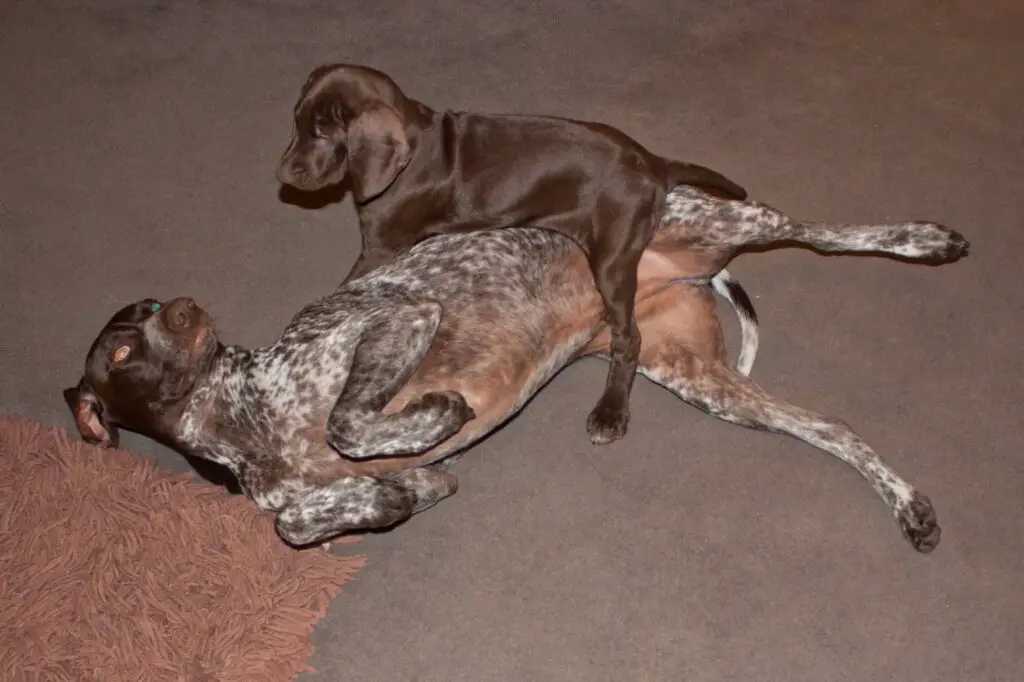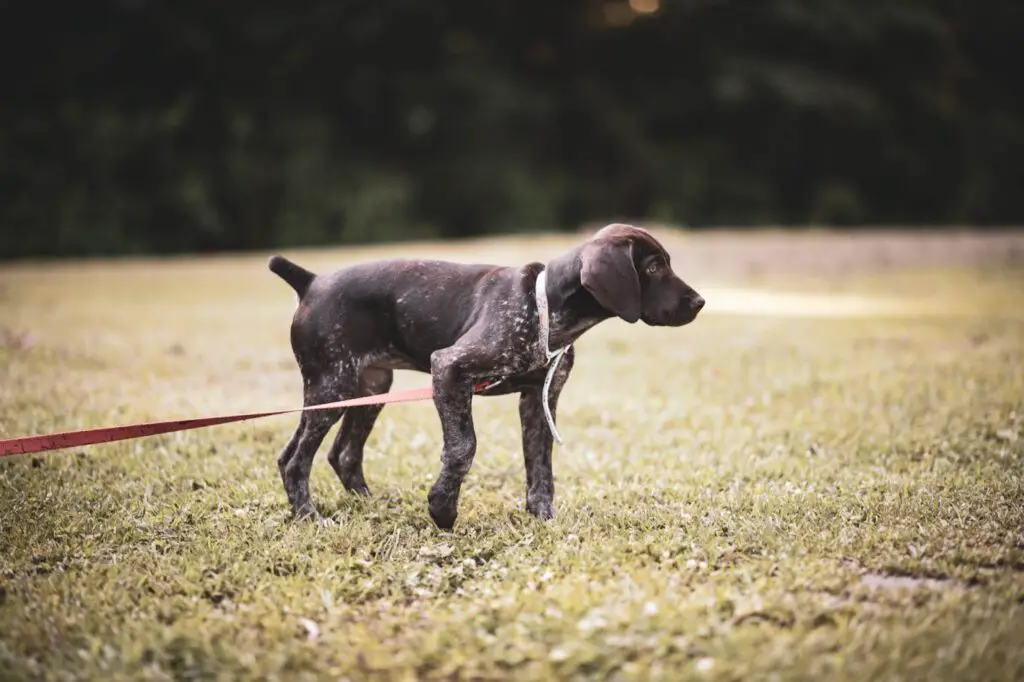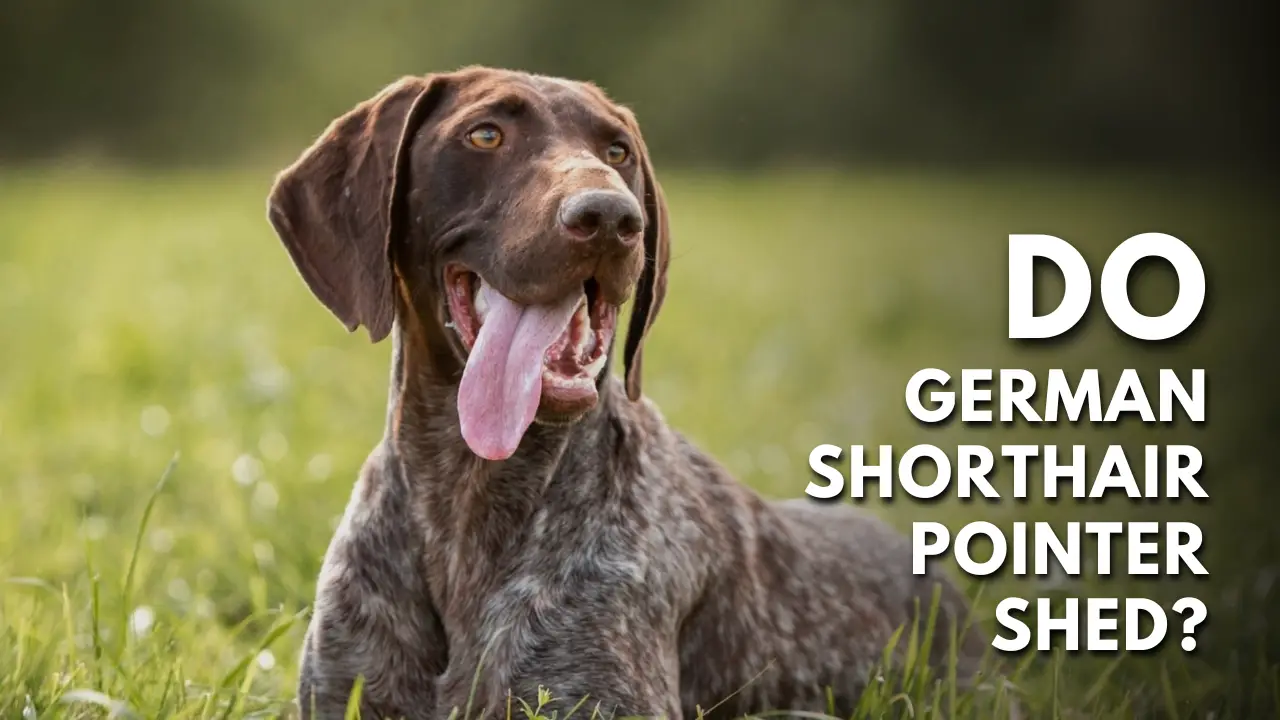The German Short-haired Pointers make great pets because they’re friendly and quickly learn commands. They’re also energetic and get along with kids and other pets if raised in the same home.
Lastly, unlike other breeds, they’re low-maintenance because they don’t shed much.
These dogs were initially bred for hunting in Germany and belong to the pointing breed. Still, many families adopt these dogs for their positive traits and short, lovely coats.
Below, I will discuss the shedding characteristics of this dog breed and explain different factors that affect shedding in GSPs, so take a look.
How Bad Does a German Shorthaired Pointer Shed?
Adult German Short-haired Pointers have short, thick, and coarse coats. Like most dog breeds, GSPs have smoother coats around the head and ears.
As for their coat color, these pups can have dark brown (solid liver), white, or black coats. However, you can also find dogs of this unique breed with a mix of dark brown and white or black and white colored coats.
Moreover, these dogs often have a patched, ticked, roan coat or a variation.
In case you didn’t know, ticking means having miniature markings of color over a white background. On the other hand, patching represents a larger version of these markings, while having a roan coat means having a combination of color and white hairs all over.
These dogs also have a thick, water-resistant undercoat for preserving warmth and dryness in colder conditions. Unfortunately, their undercoat affects their shedding, especially in spring.

So, Do German Shorthair Pointer Shed a Lot?
Many dog owners assume that short-haired canines don’t shed at all. However, this isn’t true. All dogs shed at some point and at least some hair.
Luckily, the German Short-haired Pointers don’t shed a lot. They’re low-moderate shedders. Also, because they’re short-haired dogs, you can’t notice the shedding as much as you would with a longer-haired dog.
Overall, they’re not heavy shedders, which is great news for people considering purchasing a German Shorthair Pointer. The only downside of having short hair dogs is that smaller hairs can be harder to remove from carpets and furniture.
As I already explained, the undercoat of these dogs plays a role in how much and when they shed.
Most GSPs usually shed during seasonal and hormonal changes, but as long as you’re aware of this and take steps to reduce shedding, you won’t have a shedding problem in your home.
You can reduce shedding in your German Shorthaired Pointer with regular brushing, frequent bathing, and a proper diet.
Let’s learn when these unique dogs shed the most and discuss possible solutions.
When Do German Shorthaired Pointers Shed the Most?
German Shorthair Pointers shed regularly. However, many factors affect how much and how often your German Shorthaired Pointing will shed, such as the following:
Shedding Season
In the animal world, there’s a time known as shedding season; during this season, dogs and cats shed more than usual.
The German Shorthaired Pointer also sheds during spring and fall.
All dogs shed before summer begins because they have dense coats and need to find a way to remain cool. The coat also protects the dog’s skin from dangerous UV rays.
Canines also shed before winter to release the less useful coat so they can grow a new, thicker one that will keep them warm in low temperatures.
Simply put, all dogs, including German Pointers, shed throughout the year to prepare for the seasons.
The Climate
Your location can affect how much your GSP sheds.
For example, if you reside in a warm climate all year round, you will notice that your dog frequently sheds to keep a short coat and combat hot temperatures.
Age
Like humans, when puppies grow older, their hair type changes. That’s why the coat of puppies differs from that of older dogs.
However, their coat doesn’t change overnight. When your dog becomes six months old, you will notice a significant increase in shedding.
In conclusion, adults shed more than young dogs as they grow and develop.

Health Issues
Healthy dogs don’t shed excessively. Certain health issues can cause a significant increase in shedding in your canine.
Schedule a vet appointment immediately if you suspect your canine has a medical condition. Your vet can help determine if the excessive shedding results from a health issue.
Alternatively, internal parasites, ticks, or fleas can cause skin irritation in dogs, resulting in excessive scratching, self-grooming, and shedding. So, have your vet check if your German Shorthaired Pointer has fleas, ticks, internal parasites, etc.
Poor Diet
If your dog has a poor diet, they will have a poorly-looking coat. Therefore, if your dog’s coat isn’t shiny and sheds excessively, maybe you should change their diet.
Provide high-quality food for your dog and ensure they get all the vitamins and minerals.
Can I Reduce Shedding in a German Shorthaired Pointer?
If your vet has confirmed that no medical problems cause your dog’s shedding, you can take certain steps to prevent excessive shedding.
Here’s a list of helpful tips for coat maintenance in canines.
Regular Grooming
You will reduce their shedding if you frequently bathe and brush your German Shorthaired Pointer’s coat.
Moreover, you can save a lot of time and effort by investing in a good brush. Consider a dual-side brush for detangling knots while also stimulating circulation.
The right brush will make grooming more enjoyable for you and your canine. The best part? Your puppy will have a shiny, knot-free coat and shed less.
Investing in a Good Air Filter
Regular grooming can’t stop shedding altogether. You might still find hairballs hiding in the corners of your home or flying in the air.
You can solve this issue by grooming your dog outside when possible and purchasing a high-quality air filter to reduce dog hair and other animal-related allergens.
The air filter will decrease the loose hair in your home and your lungs.
Are German Shorthair Pointers Hypoallergenic?
German Shorthaired Pointers aren’t hypoallergenic—no dog breed’s hypoallergenic.
Many people think they’re allergic to dogs, but this isn’t true. They’re allergic to a protein in the dog’s saliva.
When dogs groom themselves, these proteins attach to the dead skin that forms on the skin’s upper layer, known as the epidermis’s corneum layer.
This layer acts as a protector of the dog’s coat and sheds off (dander). When you inhale the dander with protein, your body produces histamine, which triggers allergic reactions.

If you want a dog, you can prevent allergic reactions by reducing the amount of dander and loose hairs you inhale by buying a good air filter.
Alternatively, regular grooming by experts can help you prevent allergic reactions.
German Shorthaired Pointer Shedding: Last Tips
German Shorthaired Pointers aren’t just great hunting dogs. They’re also good pets with friendly personalities and unique coats requiring regular grooming.
If you have a German Shorthaired Pointer, you can stop excessive shedding by bathing and brushing your pet regularly. You can also keep your dog’s sensitive skin and coat healthy with natural oils.
You can hire a professional if you don’t have experience bathing and brushing a dog.
As I already explained above, these canines aren’t heavy shedders. However, they still shed regularly during the shedding season (spring and fall).
So, Can I Stop Shedding Altogether?
Shedding isn’t something you can prevent altogether, but you can reduce the furballs in your home by brushing your canine weekly or even daily if you have the time.
Lastly, purchasing a dual-sided firm bristle brush can make the experience much easier and more enjoyable.
So, go ahead and equip yourself with good grooming tools and take care of your dog’s coat. You can also join the American Kennel Club for extra advice.
Although German Shorthaired Pointers require extra grooming, having one as a pet can enrich your life and bring happiness into your home. These dogs have a good temper, making training a breeze, so they’re perfect pets.

